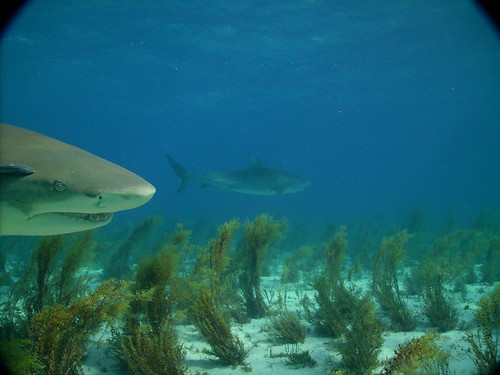Hale-Blacktips don't rest on the bottom unless they are stressed. In this case, the aquarium I worked at in Connecticut had just received a pair of blacktips via air freight. They were pumping water over their gills like whitetips, and both were fine until I quit the aquarium many years later.
Scubahagel- Shark studies, or most research for that matter, is headed up by a principal investigator who often has a PhD. At universities, the PI has a number of PhD students and post-docs working under him on various projects. Each of them, in turn, has undergraduate students, volunteers, and maybe a few employees under them. From my experience, the paid positions are handed to people they know professionally such as former volunteers and students. At NOAA, there is a PI who has a team of employees under them. In almost all of these cases, a bachelor's degree in Biology, Zoology, or something related with experience might get your foot in the door, but the field is highly competitive and it really helps to know somebody. My last job at NOAA had 120+ applicants for only 10 open spots.
That said, for experience, you can try volunteering. People love free help. Off the top of my head, there is a program that teaches photographic identification techniques on threshers somewhere in the south Pacific. I could dig up the name if you want. Also, aquariums often accept volunteers. I've heard of universities in California and Alaska studying salmon sharks, but nothing in Canada specifically, sorry.









